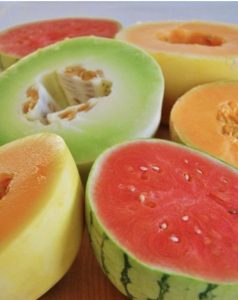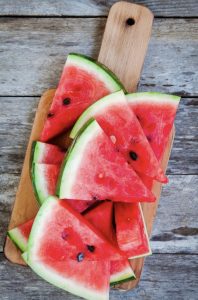
JANUARY IN THE TUNNELHOUSE- RETURN AND RECOVER
May 24, 2023
JANUARY IN THE TUNNELHOUSE – Return and Recover!
January in the tunnelhouse
Welcome to Morrifield’s monthly garden guide where we go undercover to bring you the best tips and tasks for great greenhouse growing. January can bring with it baking heat and drying winds. For many, it also signals the return home from a summer break, and the task of tending to a greenhouse that has been in the care of a well-meaning, but perhaps not-so-experienced minder …
Morrifield’s Gardening Zones
Our long maritime country is filled with exciting microclimates. That means your gardening zone may be quite different to your neighbour’s, just a few kilometres away. Use our simple descriptions to help gauge which undercover zone sounds like you!
Zone 1 (Warm Winters, Hot Summers)
Zone 2 (Mild Winters, Hot Summers)
Zone 3 (Cold Winters, Mild Summers)
Zone 4 (Severe Winters, Hot Summers)
Top Tasks Around the Country
All zones

How to harvest
In the excitement of discovering a ripe harvest in the greenhouse, it can be tempting to pull it off the plants then and there – but if you want to care for your plants and promote more veges, it pays to be measured in your approach. Always use snips to clip fruit from plants. If you pull or tug it off, you risk pulling roots from the ground, cracking stems, snapping foliage, and knocking off delicate flowers. It’s also easy to tear skin from stems, or to bruise fruit that will then attract rot as it continues to ripen. To avoid the temptation of an impromptu harvest, always keep a pair of snips and a bowl in the greenhouse.
Pest patrol
From mid-summer onward, pest insects are actively looking for plants on which to set up home, and breed. If you’re growing organically, and your plants are in good health, there’s no need to panic at the sight of pest insects on foliage. Don a pair of thin gloves, such as those used to wash-up in the kitchen , and squash (don’t rub) the insects against the foliage. Don’t be tempted to use regular garden gloves for this purpose as they are too bulky for the task. Your aim is not to rid your greenhouse of pests, entirely, but to limit numbers so your plants can use their natural defences (such as strong stem-skin and foliage surfaces) to combat attack. Build up the health of plants with regular feeding and deep watering to help them do this. If you feel your plants are losing the battle, spray (every second day) and on both sides of foliage, along stems, and on the ground, with a solution of soapy spray made as follows: Dissolve ¼ tsp of hard bathroom soap in one litre of boiling water. Leave to cool thoroughly before pouring into a spray bottle. Another great organic option to catch unwanted pests are flying stickies which are below link attached
https://www.mitre10.co.nz/shop/easytrap-flying-insect-stickies-pack-of-5/p/227738
If you are not an organic grower, read very carefully the instructions on any insecticides you purchase. Some are not suitable for using at all times in the plant’s life cycle, or in the greenhouse. Chemical insecticides can also harm bees and other pollinating insects.

Match your mulch
While most mulches will work in an outdoor setting, the mulch you choose for greenhouse really matters, especially in the heat of mid-summer. Pine needles and fallen leaves are freebies, and keep the ground beneath your plants damp, but they are not the kind of materials that are best at sucking in moisture during casual waterings. Lawn clippings are also free, but not advisable, even when kept away from the base of stems. As they dry, lawn clippings create a hard crust which repels water and can prevent it seeping down around roots. Some lawn clippings may also contain glyphosate, and even a tiny amount of this chemical can kill greenhouse plants. Choose, instead, a mulch material such as organic pea straw which has the ability to absorb and later release water. Coconut coir mulch does this very well, too, as does fine (not medium or course) bark mulch. New Zealand Wool Mulch is a relatively new product on the market which is not only water-absorbent but also feeds your plants at the same time. Available in pellet form, the material holds 1.5 – 2 its their weight in water.
Zones 1 & 2
Help the heat-stressed!
Heat stress can knock greenhouse plants about. Even when you’re at home, it takes vigilance to adjust ventilation on a daily basis, but when you’re away on a holiday break and relying on a garden minder, that’s not so easy! Whatever your situation, know the signs of heat stress in your undercover plants, and how to manage it.

Heat stress signals include stunted growth, browning leaves, shriveled flowers, and uneven fruit set (indicated by few, or no, fruit where you would expect to find it). Help your plants recover by removing any mature fruit, and also any almost mature fruit (such as tomatoes, aubergines and capsicums) that will continue ripening indoors. This lightens the work load on the plants. Refrain from removing shriveled leaves unless they are diseased (even dry leaves provide fruit with some shade from the sun). Water your plants slowly and deeply, then mulch the ground beneath them. Don’t be tempted to fertilize until a week has elapsed. If you do, you’ll be forcing your plants into a state of rapid growth that their ailing roots can’t sustain. Instead, after a week has elapsed, introduce dilute liquid feed 2 times a week, slowly increasing its strength over the next fortnight. If any plants are compromised to the point that they are unlikely to recover, don’t dither – take them out of the greenhouse before they attract pest insects.

Mind the Melons!
Melons are such a rewarding fruit, but they require care as they begin to fill out. Too much water can see them split as their skins become harder, and as they increase in weight, they can tend to pull down and break their vines (this presumes you are tying the plants to supports rather than leaving them to trail on the floor of the greenhouse where they will attract fungal disease). As the fruit gets heavier, provide supports for them (soft-net mini-hammocks are best as they allow air to circulate over the skins of the fruit. Always water the plants from the base to avoid wetting the hammocks.
Zones 3 & 4
Grape Work!
Growers of greenhouse grapes are beginning to count their bunches, but if you want the fruit to fill out and ripen, there’s more you need to do over mid-summer. Although grape vines thrive on heat, their fruit and foliage is highly susceptible to fungal attack, especially during periods of high humidity. Keep your tunnel house well ventilated, day and night, and attend to foliage thinning and tendril removal to encourage air flow. If powdery mildew is visible on leaves, try spraying foliage-only with a solution of milk, diluted by 50% with clean, fresh water (raw milk is preferable). The solution is said to raise the pH level on the surface of leaves, something which can deter some fungal spores. The greatest chance of success is when spraying occurs as soon as the mildew makes an appearance, or as a preventative. Repeat spraying will be necessary. (Always wash fruit before eating it.)
Back to basics
It may be mid-summer but for those whose climate produces only a short flurry of heat, and who’s region never quite reaches the heady temperatures that others take for granted, it’s time to start sowing the basics undercover again. We’re talking dwarf beans, edamame (fresh soy beans), basil, zucchini, and late potatoes. Pop these seeds and tubers into pots where they can be moved into the greenhouse as soon as temperatures decline, or if you’re having a poor summer, sow all but the potatoes directly into the greenhouse soil.
Sow me undercover now
Zones 1 and 2
Cucumber, corn, tomato.
Zones 3 and 4
Basil, cucumber, dwarf & climbing beans, edamame (soy beans), zucchini.
Transplant me undercover now
Zones 1 & 2
Cucumber, corn, tomato, zucchini.
Zones 3 & 4
Dwarf beans, basil, zucchini.
News and views
It’s generally holiday time for many of us when the tunnelhouse is probably the most productive and everything is growing incredibly fast, including the weeds!

If you cant water your tunnelhouse, maybe think about a timer for self watering while you are away and you must leave the ventilation open as it is too hot and harsh on your plants this time of year. Maybe a neighbour/friend can help with this if need be and there are always plenty of goodies to be harvested!!
